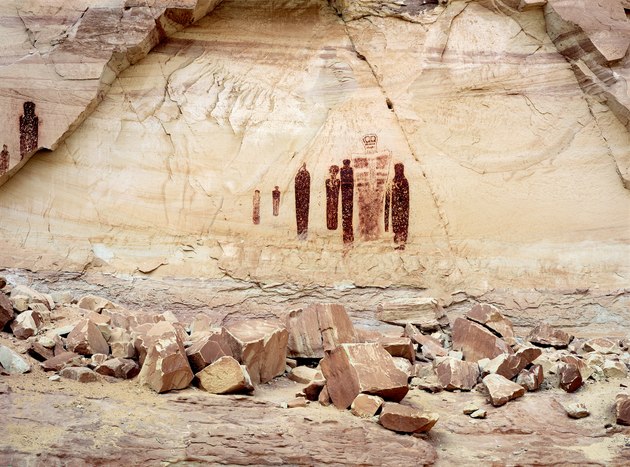Horseshoe Canyon shelters one of North America's most significant rock art sites. Beginning around 8000 BC, hunter-gatherers from the Desert Archaic Period seasonally visited this canyon and created pictographs (paintings on rock walls) between 1000 BC and 1000 AD. Using a mixture of blood, vegetable, and mineral compounds, they depicted hundreds of figures as tall as eight feet and as small as six inches along a 200-foot wall within this secluded gulch of eastern Utah's desert. The people who painted these figures left few other traces of their culture, though their pictographs and petroglyphs (rock carvings) resemble some Aztec and Puebloan iconography.
The Holy Ghost Panel in this photograph portrays ghostly anthropomorphs that suggest a spiritual meaning and are prominently displayed within the canyon. Specifically, those who painted these shamanic-like figures responded to the character of the surface upon which they were rendered. Enclosed by the proscenium arch of the cliff's overhang, the wall was exposed through a rockfall, revealing a smooth, almost luminescent stage-like façade. Anthropologist James Farmer posits that it served as something like a "spiritual membrane or portal through which supernatural entities move between earthly and supernatural realms."
- James Baker

